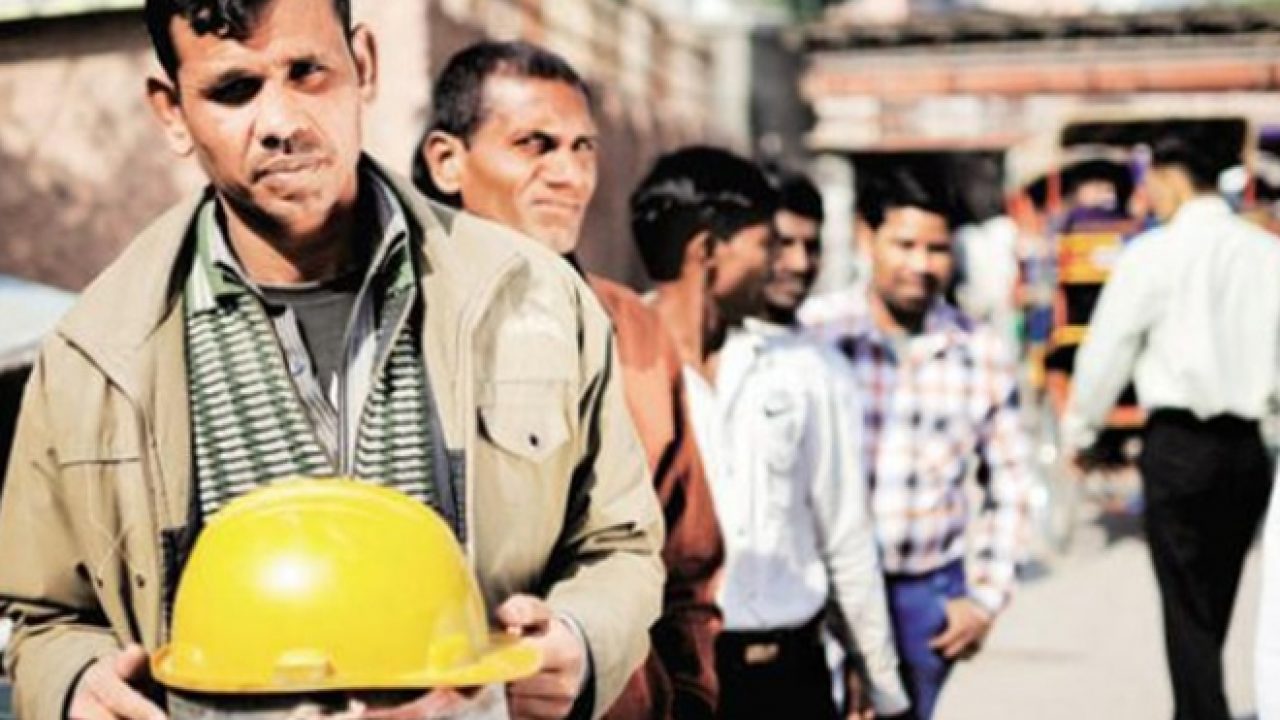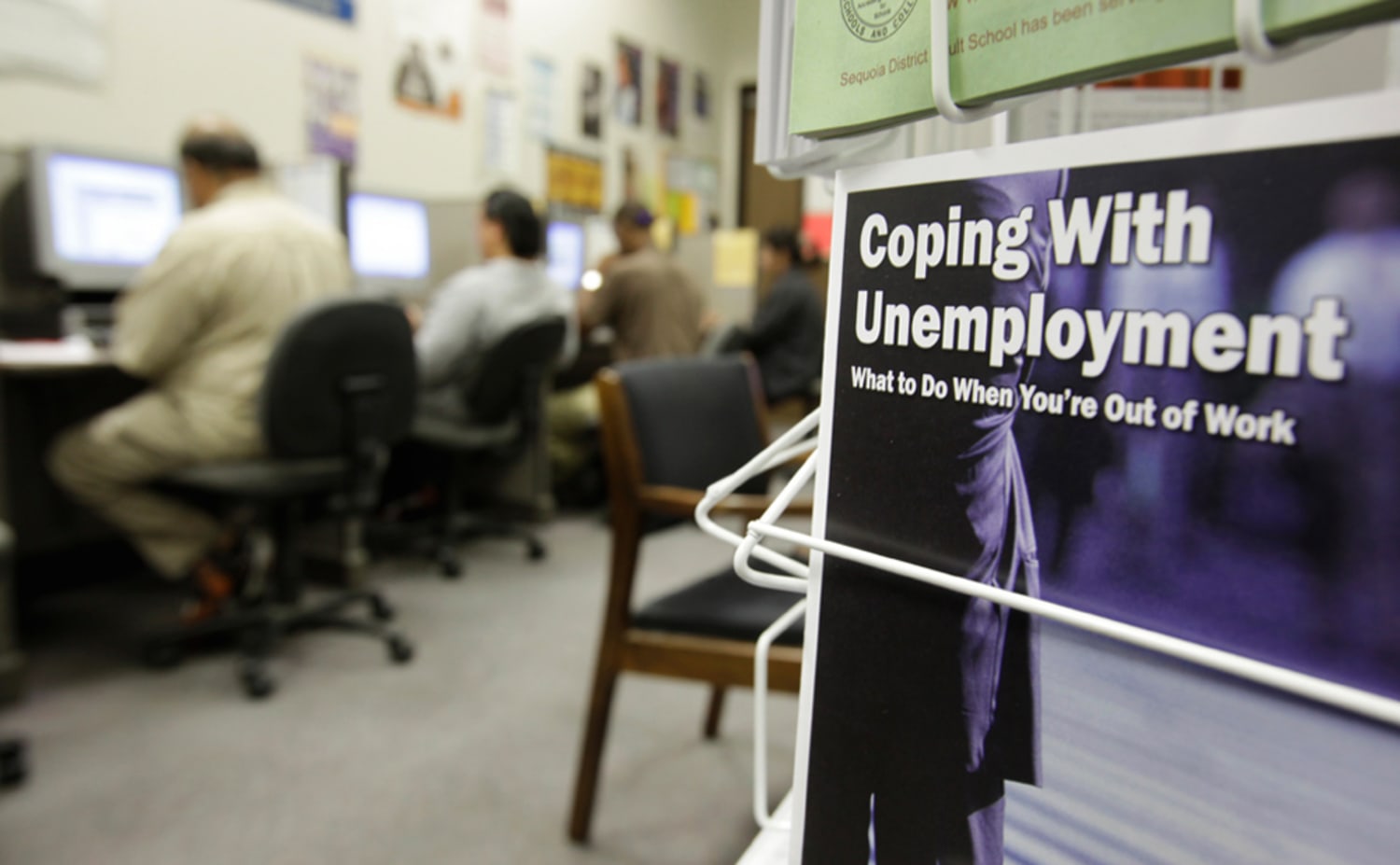Lack of Unemployment or Lack of Unemployability? What Is the Real Issue India Is Struggling?

Lack of Unemployment or Lack of Unemployability? What Is the Real Issue India Is Struggling?
In today’s time, one of the significant issues or social issues that India is facing is unemployment. For a country like India, unemployment is considered a normal aspect that you observe in your day-to-day lives. We see many people facing many financial problems because of unemployment, and one of the mean factors that could be considered in this issue could be the reason for education. Education is very important, and it is the medium to have a good Life.
Education is critical as it tells us to deal with problems in life Spend, especially when it is a financial problem, it provides us with the insight to have a clear mind or to be able to make decisions in life that would benefit the future, and there are many other important reasons like these considered very important. Today, unemployment is something that has become a critical area of concern on a global scale. India is a country that is facing a lot of population issues as it looked into the accounts then after China, India is the most populated country as the population is growing every day in India.

The increasing population is bringing more challenges to the aspect of employment. Because of the kind of work system or the kind of employment opportunities we have in the country, it is going more towards the part of unemployment. Even after the increasing number of different types of educational institutions, the notable industries, and significant volumes of other academic courses, the aspect of unemployment in India seems to be at a very constant level. For a country like India, which has a cultural focus on professional qualifications and academic learning, they have been observed a major disconnect between acquiring skills and education.
It has even been estimated by the GRE, Which stands for Gross Enrolment Ratio, has shown the percentage of the Indian higher education is 34%, which is very low when compared to the other developed countries, which stand a GRE of 56%. Every India has around 60 lakhs of students who get graduate from different colleges and different courses, but still, very few of them are considered fit for job opportunities or employment.

It has been calculated that around 70% of all these graduates lack the essential employable qualities and skills for which they are not selected for their particular jobs. It has also been reported or calculated in India that 10,00,00 people will be joining the labor force in the coming 20 years every month, and this estimation could lead to many layoffs. It’s a burning issue in India that the country needs to be very Serious about the unemployment or the lack of unemployability.
Unemployment is considered an illness, whereas unemployment is regarded as a symptom. Therefore this illness needs to be cured but not the symptoms. In India, people meet gently focus on the illness but not on the sign, which is why the illness is not still treated. India needs to have a volatile and very evolving environment for its I.T. industries or their different kinds of industries.
It is essential to have the relevant kind of skills and training in terms of I.T., which are considered to be very dynamic changes in the aspect of I.T. in terms of Industry and different job roles. Just educational qualification should not be enough, but it should also include other skills that people should have adaptability, learnability, and scalability. The people of India, especially those people are running big industries and big companies, always lakh all of these qualities because they want a suitable qualification, but they do not focus on the kind of quality the person has,
Therefore, most of the time, a person with a good skill or a good ability is neglected just because of their educational qualification. The primary difference between the two terms of unemployment or unemployed will is very simple unemployment is just the state of being an unemployed, and unemployed military means someone who is not acceptable for employment as a worker. Still, millions of graduates in the country are hoping to start their new work journey, but they soon realize that the people or the employers are looking for that kind of skills that they never even got.

This is when the country’s young generation comes to an end of having experienced the most bitter, and sometimes it also makes them lose their confidence or the urge to become something in life. While on the one hand, it is tough to get a proper job and be called a better employee. On the other hand, it is also hard for the different organizations with influential organizations to find suitable candidates for their companies.
In India, there is still a shortage of very progressive and very advanced kinds of institutions that believe in giving opportunities to the people who are skilled but not based on their educational qualifications. In terms of institutions, there is a certain amount of one lakh in institutions as they don’t provide the most quality, industry-oriented kind of education because of the lack of absence of their Industry in orientation and lack of awareness.
In the case of unemployment, the scenario of Assam is also worst. According to the statistics that are made available by the state Skill Employment and Entrepreneurship organization, the total number of registered employed people in the state is nearly 19,63,376; 16,65,866 are educated or skilled, and 2,97,510 unskilled ones.
Further, according to the statistics, the state has nearly 942 unemployed medical graduates, 7,804 jobless graduates, 327 jobless veterinary graduates, 832 jobless Agriculture graduates, and 16575 postgraduates students, 3,97,824 general class graduates, 6,82,796 H.S.- passed students, 5,67,340 HSLC candidates and 46,137 others. The highest number of unemployed people have their names registered in Guwahati, around 3 lakh. The lack of important skill-based education in schools and colleges is the main reason for the exercise of unemployment.

Our education system is primarily concerned with quality, knowledge, and written examination more than practical-based tasks. For all of these reasons, after completion of graduation, while facing interviews, students find themselves lacking in confidence and skills. The rapid growth of the population is also a burden on cultivation.
The low productivity in the agriculture sector, defective economic planning, the lack of capital, etc., are also some of the main reasons for unemployment. The overall result of the unemployment rate is already not so good. At the same time, now due to the coronavirus effect has left a devastating impact on the economy of India.
Employability in India
Unemployability in India has a deeper shade of concern in the COVID-19 times when education was highly affected. All schools were shut down, and even the youngest children were obliged to sit through their classes online if they wished to get themselves of education. The first learning app by Byju is the education firm partnered with Walt Disney, which aims to make learning fun and interactive for 6-8 year-olds.
It seeks to address all the main reasons for unemployment at different stages in one’s career. It is the rigidity of the individual’s learning abilities and the reluctance to reinvent oneself to meet the changing needs in different job roles. Particularly in India, among the classes suffering the greatest unemployability are incredibly prone to incapacity, or at least the hesitation, toward reassessing themselves and growing in new coming directions.

Career growth and adapting to all the new needs in the market also fall under the purview of the needs of unemployability. For all the professionals in the global village, change is the only reason. Keeping themselves attentive in skills and awareness of the trends is a mindset everyone needs to cultivate if they hope to remain the most sought-after in a changing, evolving market.
Unemployability is a bigger problem than unemployment.
If unemployment is because of the inexistent or insufficient job opportunities, there are some reforms that are initiated by public and private entities to address the major concerns in the administrative field, from the local self-government to the field of the Indian government, every administrative body angle towards generating employment as part of ongoing welfare and endowment efforts for the nation’s greater good.

However, the aspect of unemployability in India is a whole other, graver problem. Despite the availability of different learning opportunities, unemployable people turn into uninitiated workers who don’t upgrade their skills in a timely enough fashion for the coming trends. They would not have used the educational methods and facilities and methods to the fullest for various reasons. They are, therefore, not able to achieve their true talent or potential in the financial and economic senses in others. This is why unemployability is considered a bigger problem than unemployment.
Ironically, the problem of unemployability is afflicted by the advancement for which Indian I.T. and scientific pursuit pride themselves. Artificial Intelligence and Machine Learning can speed up, scale-up, and automate some of the jobs. At the end of a fruitful research and development (R&D) cycle, this can be about the loss of jobs. It renders several workers unemployable when an A.I. algorithm takes over some job families.
Reasons behind unemployability in India

There are some factors of India’s unemployability problem that are unique: The caste system and India’s continued dependence on the Farm Economic exert pressure on compliance with the joint-family system, different business models based on the Hindu Undivided Family, and meager education. The growing youth are expected to join the farmhands anyway, and the skills attained at the school level are barely enough to carry out gainful employment in the organized sector if needed later in life. Agriculture-based income contributes a total of 17% of India’s total GDP and accounts for the livelihood of around 60% of the working population.
At the center of the challenge of unemployability lies a refreshed perspective among educators, employers, and the talent pool. The shift in business owners’ mindset is palpable. Tech giants like Tech Mahindra now have on-site learning and different development centers. Students can supply their share of enterprising thinking by enrolling in self-learning courses on EdTech platforms.
Universities, in their turn, forge partnerships with different startups and corporates. This major shift in thinking marks the trend in which the focus of the policymakers moves towards individual strengths and abilities as opposed to mass swathes of unemployable graduates in India, resulting in lowered employment figures. Careers and working culture have started going for a toss, and unemployability has become a two-fold problem in India:
1. Student Mindset: Many live a myth: getting into a college is the way to a great career. They fail to seek important advice from the right stakeholders, not just from peers who still believe in the “engineering royalty” myth.

Only 3.84 percent of engineers in the country have the technical, cognitive, and linguistic skills required for startup software-related jobs. A recent study at the University of Exeter in the U.K. listed skills like communication, problem-solving, being self-motivated, organization, team spirit, adaptability, and negotiation as inevitable to the hiring methods. Students from both the Tier 2 & Tier 3 fall short of these parameters multiple times and rarely strive to learn the skills.
Apart from a lack of new jobs or internships, engineers have low employability because only 36 percent do projects beyond their curriculum.
2. Outdated Curriculum and Reluctant Colleges: The Student’s attendance and writing assignments are prioritized rather than acquiring expert faculty.
Colleges cannot upgrade and keep up with the pace of development and advancement in the market in the field of curriculum and expert faculty members. The jobs of the glorified past are still redundant. Though the supply and demand for different skills like machine learning, artificial intelligence, data science, digital marketing, and mobile development that has been shooting up, only 3 percent of engineers have these new-age technological skills.
Only 40 percent of engineering graduates applied for the internship, while 7 percent of students do multiple internships, and colleges play little or no part in the procurement process.
The subjects are taught in a very comfortable and theoretical manner. Whereas 60 percent of faculty doesn’t talk about applying concepts in the Industry, only 47 percent of the engineers attend any industry talk.
In the last months, the world has changed because of the rare disaster coronavirus pandemic that has resulted in a tragically good number of human lives being lost. Many countries have already implemented necessary quarantine and social distancing practices to prevent a pandemic, and the world has been put in a Great situation of Lockdown. There is still some uncertainty about its impact on people’s livelihoods. In addition, many countries are now facing different problems -a health crises, financial crises, and a collapse in commodity prices that interact in complex ways.

The pandemic crisis has led to a severe loss of lives and economic loss in the country. In a month, unemployment rose from 6.7% on March 15 to 26% on April 19. An estimated around 14 crore ( 140 million) people lost employment during the Lockdown. It is noted that, compared to the previous year, more than 45% of households in the nation’s income is experienced a downfall. The Indian economy was expected to be down over the 32,000 crores every day in the first 21 days of the complete Lockdown.
The country’s unemployment rate had come to 27.11 % for the weekend of May 3, up from the under 7% level before the pandemic started in mid-March, the Centre for Monitoring Indian Economics (CMIE) has said. The Mumbai-based think tank said the unemployment rate was the highest in the urban areas, which constitute the most number of red zones because of the coronavirus patients, at 29.22%, as against 26.69% for the rural areas. When it was declared on March 25 by Prime Minister Narendra Modi to put the country under Lockdown to prevent the spread of virus infections, analysts had warned about the unemployment issue ever since then.
The government has announced the income and food support to the vulnerable region as part of Rs. 1.70 lakh crore in fiscal stimulus to the economic-financial- and possibly a humanitarian crisis. But it is a worst-case scenario that around 100 million and there are more Indian jobs will be at risk in and after the Covid-19 pandemic lockdown stage. From the end of March, most the companies have made three significant decisions – dismissing the people, asking the employees to go on indefinite leave without payment, and slashing salaries by as much as 85%.

In May July 2018, at the beginning of the year, Narendra Modi’s government said the lack of employment opportunities and rising prices were India’s most pressing challenges. The Lockdown has left millions of migrant workers that are unemployed. They are often from the rural areas but live most of the year in India’s megacities serving as day laborers, construction workers, or domestic help.
All the advocates for the poor say that while they support the Lockdown to save all of the lives, the way it has been rolled out with apparently little guidance for the poorest of India’s poor- may mean the Lockdown itself endangers more lives than the coronavirus. India’s finance minister Nirmala Sitharaman announced more than 22 billion in coronavirus relief money. Sitharaman told the reporters, “to reach food to the poorest of the poor, reach money in the hands of those who need it immediately.”
But according to some economists, that’s not enough, “we need a much, much larger stimulus- at least two or three times that amount,” says Jayati Ghosh, professor of economics at Jawaharlal Nehru University in New Delhi. Migrant workers fled India’s cities after Narendra Modi’s Lockdown left them suddenly unemployed.
Now the employers that let them go may need to offer significant incentives to lure them back, “the country has seen two major lockdowns till now, both different in different aspects, and now we have to consider the way ahead in future. Prime Minister Narendra Modi noted on Monday that the country would have to give importance to the economy because the Lockdown has severely affected the economy.
Solution
While the basic graduation and technical education can be called the entry point, students need to invest in important employable skills in relevant technologies with specific learning methods. All of the learning paths should ultimately set the learners on a career path.

The I.T. landscape is constantly changing. The need of the hour for the prospective and existing workforce to continuously upgrade their skills to contribute to the growth of the organization, industries, society, and the economy. It is time for all the individuals, institutions, and enterprises to come together in cooperation and engage with proper platforms to address this issue. The panacea would embrace a holistic approach to learning and architecting appropriate training methodologies and curricula that align with the industry needs and job demands.
The current learning ecosystem needs to be very thoughtful in considering how to architect learning programs that can be further customized to meet learning objectives while supporting different learning styles in holistic environments with an outcome-based approach. By responding to the niche expectations of 21st-century students and eliminating restrictions regarding what brings a learning space, it needs to go beyond the confines of traditional ways. The need of the hour is that we become facilitators and enablers of an enhanced learning process.
The broadly adopted brick-and-mortar approach to learning that dates back to the early 18th Century has remained completely unchanged – until now. The rise of pedagogies (like Blended Learning) has dominated today’s educational and learning reforms. In spite of the challenges, lack of understanding, and a steep education, embracing blended learning is increasingly less an option and more of a mandate.

We are learning as a concept that needs to change. It needs to be beyond the limitations of space and time. It becomes a big and engaging indulgence with a series of different experiences on the pathway to getting more employable, resulting in fighting unemployment. There are different approaches that are needed to solve a problem as significant as this. But we need to remember that what needs to be fixed is unemployability, and then unemployment will heal itself.
Startups have a better chance of solving the challenges simply because they can aggregate and accelerate. When all of the stakeholders work as a team with a focus on employability to provide industry-oriented quality education, which can bring advance as quickly as the development and technology, it can bring about a paradigm shift in mainstream methods of education:
Student Awareness: Students always need to learn that one-time education (degrees) will neither guarantee them jobs nor will last through their entire working career. Companies are shifting from hiring new employees based on credentials to hiring based on a candidate’s portfolio/projects and experience.
Institute collaborations EdTech startups can collaborate with different institutes that provide infrastructure and accreditations keeping the business models “asset-light.” Startups can either take the on-campus “Bootcamps” methods (E.g., PESTO), providing 2-6 months- of coding, soft skills, workshops, mock interviews, industry talks, and new-age technology courses along with placements in different internships, or the complete take-over method (E.g., Sunstone Eduversity) where the different responsibilities for academics, admissions (program design, curriculum, and pedagogy), and placements are presided by the startup.
The Industry collaborations Startups can diligently make industry collaborations with industry experts and stalwarts to help prepare a better curriculum in resonance with the current market scenario and bring industry leaders as expert faculty on board (can be a mix of online-offline lectures), which would help all the students understand market demands. Collaborations should focus on offering hands-on experience in terms of internships. Placing these students is more accessible because of trust due to industry collaborations.
Certification Collaborations Institutes or startups should collaborate with other strategic partners like different foreign universities and renowned private education companies using the best industry-oriented curriculums and opening up new avenues like digital marketing, A.I. & ML, big data, cloud computing, etc.
We need change. We need it now. We need it at a pace that can only be achieved through strategic collaborations. We need dozens of good startups to keep up with the pace of technology advancements.
edited and proofread by nikita sharma




